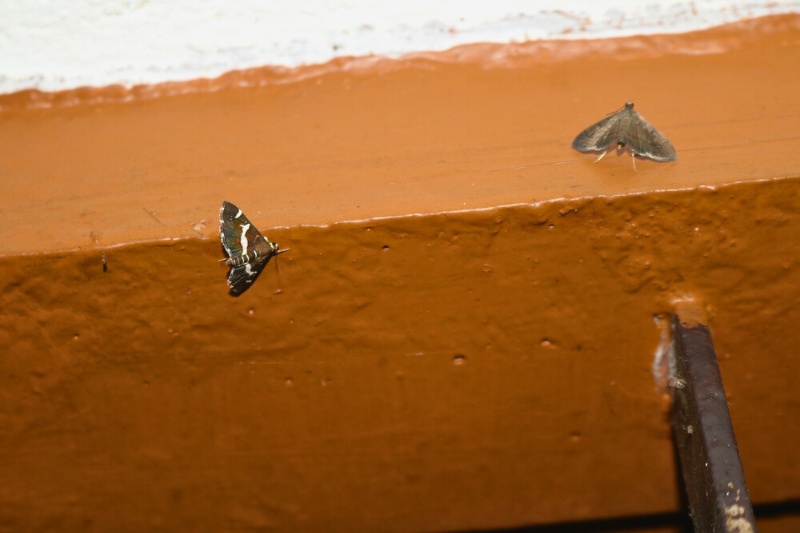Moths are tiny, delicate and often unnoticed guests in your home. That is, until they start invading your living spaces, unleashing havoc on your rugs, and gnawing their way through your precious and often expensive clothes!
You’re probably wondering why you have these pesky creatures in your home in the first place. Is the house dirty? Are smells attracting the creatures? Or is it something else?
All you need to do right now is read on to discover why you’ve got small moths in your house. You can then solve the problem and get rid of the moths.
What Are the Small Moths in Your House?
When it comes to tiny house moths, the two most common kinds of visitors are the common clothes moth and the pantry moth.
Although these pests are similar in many ways, they are actually attracted to different kinds of foods and materials, and understanding the difference in their eating habits can help you address the problem you’re facing more effectively.
Your winged enemies are in your house because you’ve supplied them with an ample amount of tasty treats to munch on and a cosy environment to thrive in. More on this below!
Common clothes moths

Clothes moths are attracted to natural fibres found around your home. These include the clothes inside your wardrobes, carpets, rugs and upholstered furniture.
The moth larvae love to feast on delicate (and often expensive) materials like wool, silk and cashmere because they contain lots of keratin, a protein they can convert into valuable nutrients.
Keratin is the main protein that helps hair and nails form and can be found in many natural materials. It’s a delicacy enjoyed by moth larvae. So, if you’ve got a wardrobe full of woolly jumpers and or a delicate carpet, watch out!
The moths typically enter your home through infested clothing or household items. For example, you bought a second-hand wool jumper with eggs or larvae on it. So, when you stick the piece in the wardrobe, you spread the eggs around and eventually end up with an infestation.
Similarly, you might’ve bought a rug from a charity shop that had larvae on it.
In addition, the moth larvae like to dine on delicate items that aren’t touched, maintained or bothered with much.
For example, if you store your wool coat at the back of your wardrobe, leave it there for the summer, and don’t bother cleaning or treating any stains on it, you’ll give your moths the cuisine they’re looking for. When you pull the coat out in the winter, it’ll have a few holes on it.
The key signs that you’ve got a clothes moth infestation are:
- You find holes in your clothes/carpets/furniture. For example, your silk scarf is covered in tiny holes.
- You might see adult moths in the darker areas of your wardrobe. They’re about half an inch in size and are usually beige in colour.
- You might spot webbing in the darker corners of your wardrobe/room.
Pantry moths
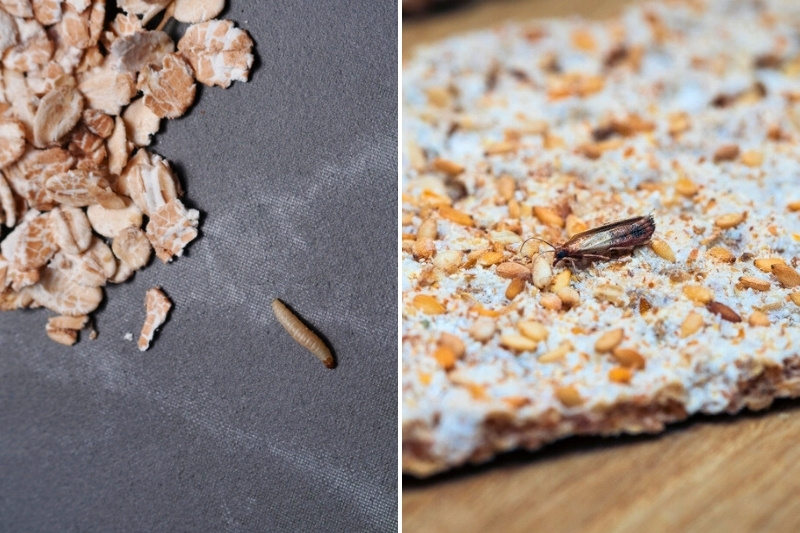
Pantry moths, also known as Indian meal moths, are usually found in kitchens and cupboards where food is stored.
These moths are attracted to cereals, pasta, flour, rice, and dried fruits. They find their way into your home through infested food items that are bought from a shop.
For example, you may unknowingly pick up a bag of rice from a supermarket with moth eggs or larvae inside. Over a short timeframe, the eggs develop into larvae, which burrow and feast on the contents of the packet of food – the larvae are the main troublemakers!
Silk webbing is spun in the packet of food, and this is used as a protective cocoon where the pests pupate and grow into adults. The adults then fly around inside your cupboard, and in the end, you notice that you have a moth infestation.
The problem can worsen if you regularly leave food containers, like flour packets and cereal boxes, open. By leaving the packages/tubs open, the pantry moths have easy access to a food source so they can thrive!
In addition, the issue can escalate if you leave food on surfaces. For example, if you don’t mop up crumbs, you essentially give the baby moths a meal to feast on.
The key signs that you’ve got a pantry moth infestation are:
- You see adult moths flying about in your kitchen or cupboards.
- You see white-coloured larvae crawling around in the cupboard or on food.
- Silk webbing can be found near/on food sources.
Addressing Moth Infestations
Step 1: Identify the source
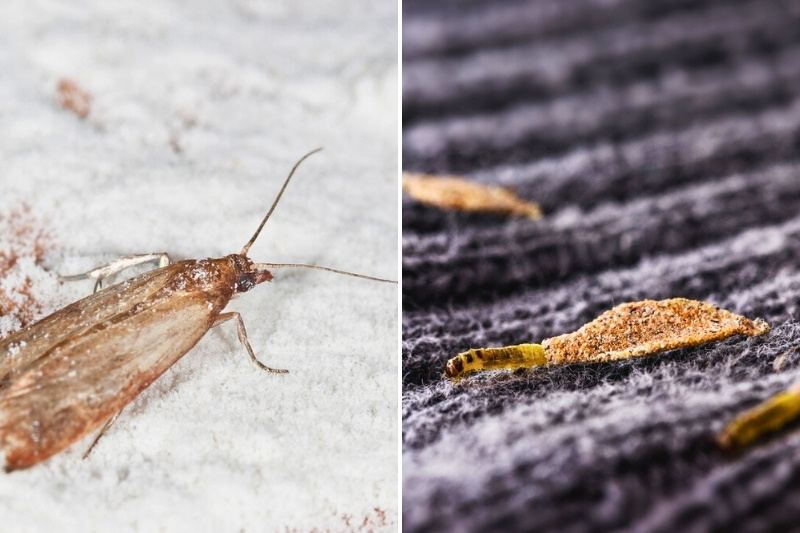
Check your kitchen cupboards, wardrobes, carpets and furniture to find the source of the problem. For example, the source could be an open and infested bag of flour or a wool jumper covered in larvae.
Step 2: Get rid of the infested item/product
Remove and dispose of the source properly.
If you have pantry moths, throw the infested food in a sealable bag to avoid spreading the problem around. Then, bin the food.
For clothes moths, wash, dry and repair your item of clothing/rug/furniture correctly. If a piece cannot be saved, throw it out.
Step 3: Clean and hoover

Ensure the infested areas are thoroughly clean and vacuumed. You must eliminate the remaining larvae, eggs, webbing and any adults you can spot.
For pantry moths, clean and disinfect all the shelving, worktops and containers in the kitchen. Mop the kitchen floor.
For clothes moths, ensure that all items in the wardrobe are washed, dried and stored correctly. Hoover the entire wardrobe and clean all of the surfaces. Then, vacuum the surfaces around the wardrobe and wash any surfaces that have come into contact with the wardrobe’s contents.
Do the same for your infested carpets and furniture! Be sure to use all the attachments that come with your vacuum cleaner to clear out all the crevices and remove keratin-filled debris from the surface (like human and pet hair, as well as chewed nail ends).
Step 4: Set up traps
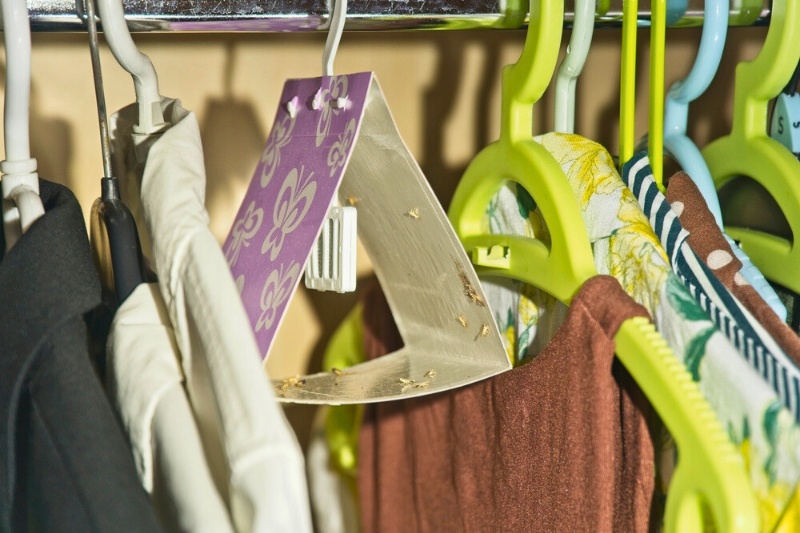
To ensure the moths don’t return, you must set up special traps, like these London Moth Pheromone traps, to lure and kill them using synthetic hormones. Using traps like these can help you control the moth infestation.
You can also place cedar chips or lavender sachets in the space to deter the moths from the area.
In addition, you may have to buy an off-the-shelf moth repeller/killer to eradicate the moths.
Step 5: Ensure correct storage
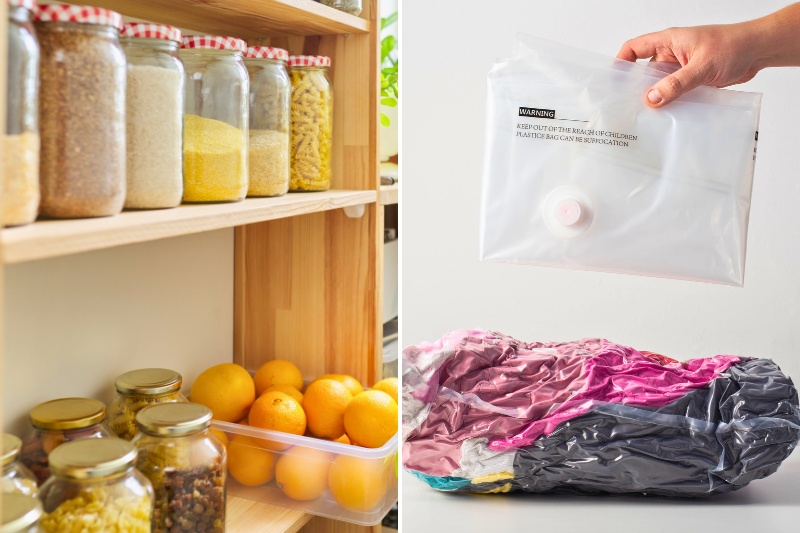
Before you put the containers and food back into your kitchen cupboard or store your clothes in the wardrobe, invest in better storage solutions so you can keep your items safe.
For example, pop foods inside air-tight containers. And put your natural fibred garments in sealable, air-tight storage bags.
These simple steps can protect your belongings from moths.
Step 6: Consider using stronger pest control methods
If you’ve got a bigger pest infestation on your hands, you may have to use stronger techniques to remove the moths from your home.
For example, it may be worth contacting a pest control expert. A specialist in this field can come to assess the problem and put measures in place to manage it.
A quick online search will bring up experts near you. Just choose a reputable person/company that has glowing reviews.
How to Prevent a Moth Infestation
Nobody wants moths in their home, so here are a few preventative measures you can put in place right now to stop an infestation from occurring:
Maintain good hygiene practices
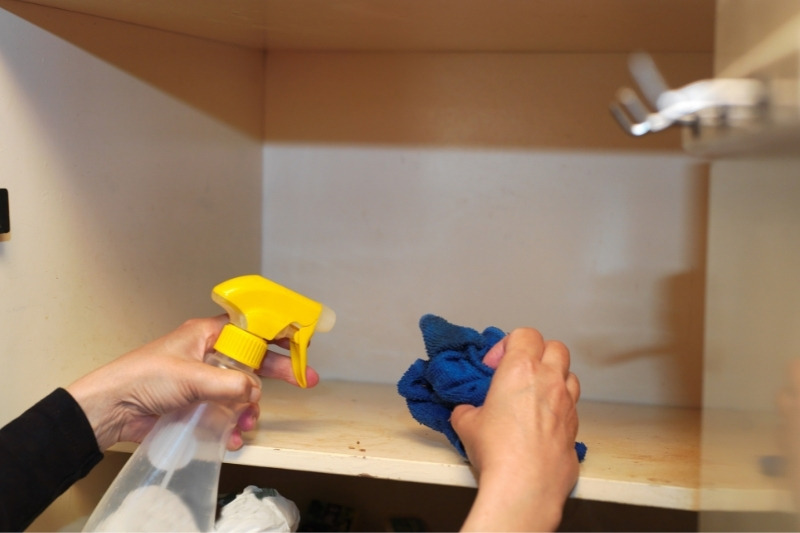
Make a habit of regularly cleaning your kitchen cupboards. And if you see that something has tipped over or there are lots of crumbs on the surface, deal with the issue immediately. Essentially, you must make your kitchen cupboard as unattractive as possible to moths, and you can do this by keeping your spaces clean.
Hoover and clean out your cupboard spaces and carpets regularly. Don’t allow dirt to build up on them. Ensure your upholstered furniture is vacuumed all over. You don’t want hidden crumbs to attract pesky visitors.
Use proper storage solutions
Make sure you use air-tight containers and vacuum storage bags to store your items. This will stop the moths from accessing the food or natural fibred garments.
Keep an eye on your belongings
Inspect your clothes and household items for holes and damage regularly. And if you do see an issue, deal with it immediately; don’t wait around!
Make sure your second-hand items are clean

Before you store a second-hand piece of clothing, inspect, clean, dry and repair it. Then, store it correctly (in an airtight, sealed bag).
Don’t allow a contaminated item to touch or be in the same area as your other clothes/items, or an infestation will break out.
Do the same for other second-hand items you bring home, including carpets, rugs and furniture.
And if you can’t handle the infestation, it might be worth saying bye-bye to your moth-filled second-hand garment.
Air out your wardrobes and cupboards
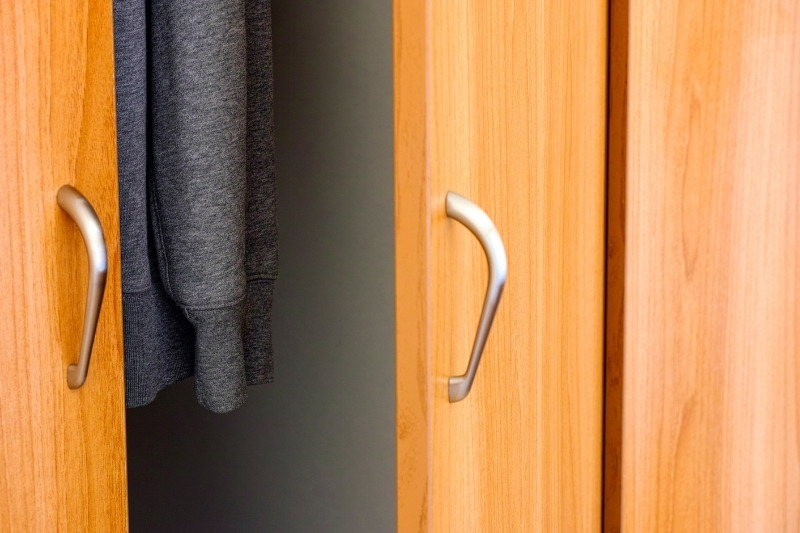
Adult moths thrive in dark spaces that don’t see a lot of action. So, leave your cupboard/wardrobe doors open so light and air can flow into the space. The moths won’t like this very much.
In addition, you could also move the stuff inside the areas around so that they aren’t resting in one place for too long. The disruptions will annoy the moths and make the space uninviting to them.
Seal up gaps
Moths can sometimes enter your home through tiny cracks and crevices. Stop them in their tracks by blocking up these entryways.
In addition, hang insect screens over doors and windows when they’re open so pests can’t enter the premises.
Let lots of sunlight into your home

Moths aren’t keen on light, so they’ll be very unhappy if you allow natural sunlight into the room(s) and disrupt their cosy living environment. Essentially, you’ll create an uninviting space that they won’t want to spend time in.

Bethan has a passion for exploring, reading, cooking and gardening! When she’s not creating culinary delights for her family, she’s concocting potions to keep her house clean!
